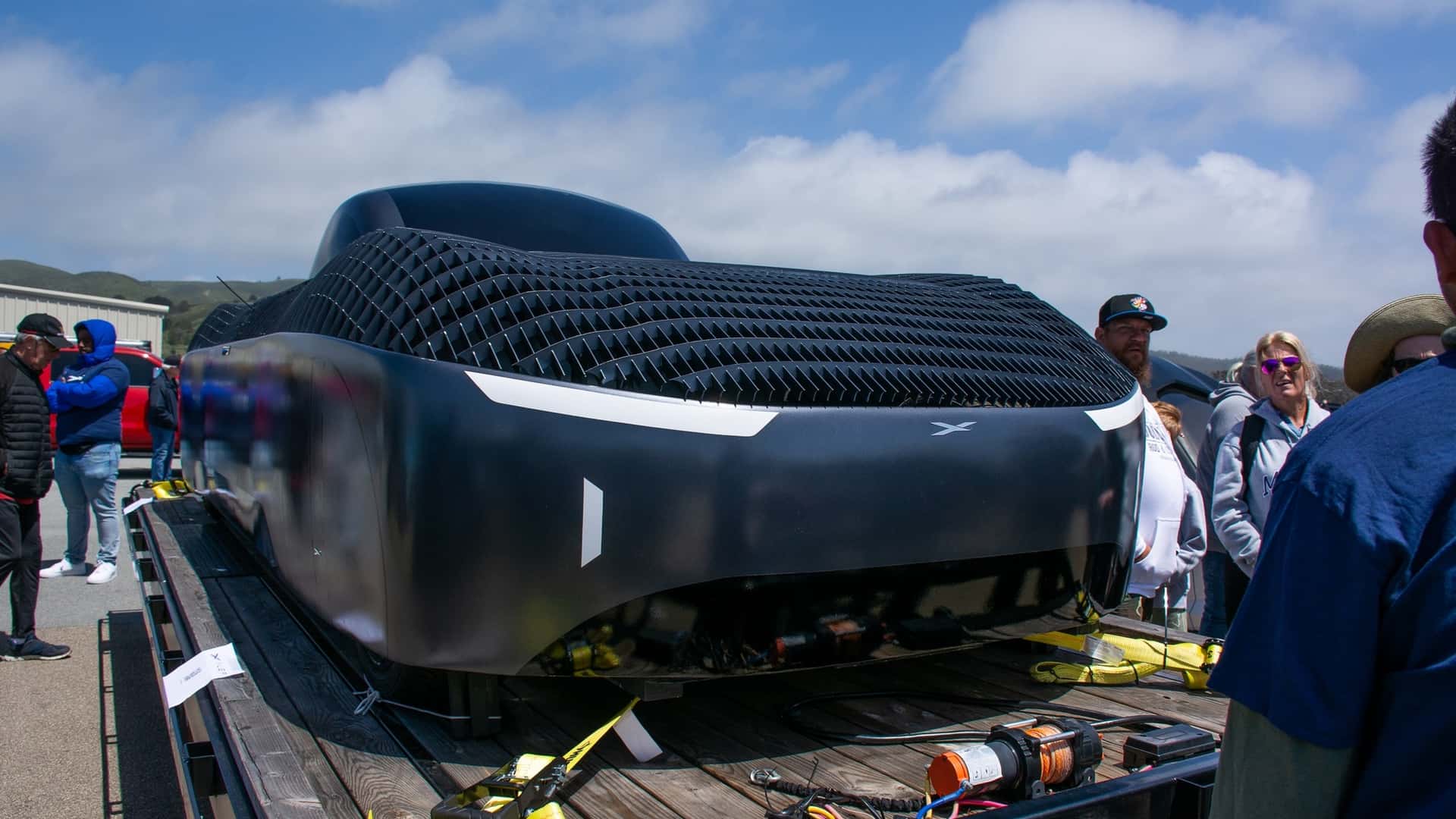Alef Aeronautics Model A, claims to be the first all-electric vertical take-off and landing (VTOL) car to receive approval from the Federal Aviation Administration (FAA) in the United States.
Driving range
The company states the vehicle has a driving range of 200 miles and a flight range of 110 miles. However, it is important to note that the vehicle is currently in the prototype stage, and there is no available footage of test flights.
According to Alef Aeronautics, they started taking pre-orders for the Model A in October 2022 and received over 440 reservations by the end of that year. Interested customers can make a $150 deposit in the regular queue or a $1,500 deposit in the priority queue. The starting price of the Model A is set at $300,000.
CEO
The CEO of Alef Aeronautics, Jim Dukhovny, expressed excitement about receiving certification from the FAA and stated that it brings them closer to providing an environmentally friendly and faster commute option.

The design of Model A is described as unique, with a mesh-like structure on the upper part of the bodywork to allow airflow for the electric motors used for vertical take-off and landing. As it can take off like a helicopter, it does not have wings like a traditional aircraft and resembles a car more than a flying vehicle.
Additional Models
Alef Aeronautics also mentions they are developing additional models, such as the Model Z flying sedan, scheduled to debut in 2035 with a starting price of $35,000, a driving range of over 300 miles, and a flying range of over 220 miles.

Here are some of the key takeaways
- The Alef Model A is the first all-electric VTOL car to receive FAA approval.
- The Model A has a 200-mile driving range and a 110-mile flight range.
- The Model A is priced at $300,000.
- The company is also developing a more affordable model, the Model Z flying sedan.
- The Model A has the potential to revolutionize transportation.
How will the company earn a profit?
The company, Alef Aeronautics, is likely to earn profits through various means associated with producing, selling, and maintaining their flying car models. Here are some potential sources of revenue for the company:
- Sales of Flying Cars: Alef Aeronautics will generate revenue by selling their Model A and future models, such as the Model Z flying sedan. Customers who have made reservations and paid deposits will be potential buyers, and the company aims to sell their vehicles at a starting price of $300,000 for the Model A.
- Maintenance and Servicing: After purchasing the flying car, customers may require maintenance, repairs, and regular servicing. Alef Aeronautics can offer these services directly or through authorized service centres, generating revenue from maintenance contracts, spare parts sales, and service fees.
- Upgrades and Customizations: Alef Aeronautics may provide options for customers to upgrade their vehicles or customize them according to their preferences. Additional features, improved technologies, or aesthetic modifications can be offered at an extra cost, allowing the company to earn additional revenue.
- Licensing and Partnerships: The company may explore licensing agreements or partnerships with organizations that want to incorporate their technology or collaborate on related projects. These collaborations can include technology sharing, joint ventures, or licensing fees, providing Alef Aeronautics with additional revenue streams.
Research and Development Funding: Alef Aeronautics may secure funding through research grants, investments, or partnerships to further develop its technology and explore innovations. These funding sources can contribute to the company’s financial stability and future profitability.
Here are some potential pros and cons associated with the Alef Aeronautics Model A flying car:
Pros:
- Environmental Friendly: As an all-electric vehicle, the Model A has the potential to reduce carbon emissions and contribute to a more sustainable transportation system.
- Faster Commute: The ability to take off and land vertically allows for more efficient travel, potentially reducing commute times and traffic congestion.
- Versatility: The Model A’s ability to take off and land without a runway provides flexibility in choosing departure and arrival locations, potentially opening up new transportation possibilities.
- Innovation: Developing a working prototype and approval from the FAA represents a significant step forward in personal air transportation.
- Potential Future Developments: Alef Aeronautics’ plans for future models, such as the Model Z flying sedan, indicate their commitment to advancing technology and offering more affordable options in the future.
Cons:
- Cost: The starting price of $300,000 for the Model A may make it inaccessible to many potential buyers, limiting its market reach.
- Limited Range: The driving range of 200 miles and flight range of 110 miles may be limiting for longer trips or commercial applications.
- Infrastructure Requirements: The widespread adoption of flying cars would require infrastructure development, including landing pads or designated areas for takeoff and landing.
- Regulatory Challenges: While the Model A has received approval from the FAA, there may still be regulatory challenges and requirements to ensure flying cars’ safe and responsible operation.
- Market Viability: The success and widespread acceptance of flying cars as a mainstream transportation option are still uncertain. Whether there will be sufficient demand and market acceptance to make flying cars, a viable industry remains to be seen.
As the Model A is still a prototype, its actual performance, market reception, and overall impact will be determined once it becomes commercially available and undergoes real-world testing and use.
Conclusion
Alef Aeronautics, the company behind the Model A flying car, aims to generate profit through various means associated with their vehicles’ production, sale, and maintenance. They plan to earn revenue from selling their flying cars, with a starting price of $300,000, as well as through maintenance and servicing contracts.
Upgrades, customizations, and licensing agreements or partnerships could provide additional revenue streams. Research and development funding may also contribute to their financial stability and future profitability.
At the same time, it’s important to note that the success and profitability of Alef Aeronautics will depend on market demand, competition, regulatory factors, and the successful execution of its business strategies.
As the company is still in the prototype stage, the actual financial performance and profitability of Alef Aeronautics can only be determined once its products are commercially available and its business operations are fully established.
Alef Aeronautics via Electrek

































